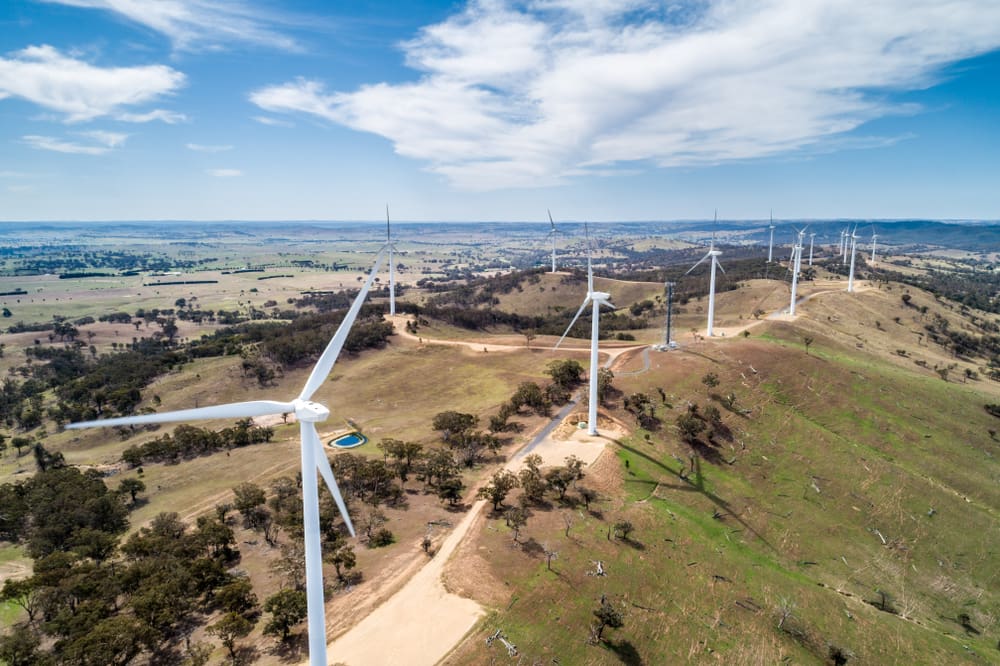THE Federal Opposition has set the tone for its next election campaign, pledging to reverse the Federal Government’s 2030 emissions target.
Labor’s goal to reduce emissions by 43pc between the years of 2005 and 2030 has had a profound impact on agriculture since it was elected in 2022 – prompting a wave of investment into renewable energy and ramping up reliance on the carbon market.
The goal has received mixed responses from the agriculture sector, with some seeing it as an opportunity for the industry, others seeing it as an unnecessary burden and all opinions in-between.
Now the opposition is making a direct challenge to Labor’s approach, with Peter Dutton pledging to ditch the 2030 target and rely on nuclear energy to reach net zero by 2050. Most of the heavy lifting is expected to be done between 2040 and 2050 as the transition into nuclear would likely take that long to come online.
If the opposition is elected, what will the changes mean for agriculture?
Renewable energy
The primary objective for ditching the 2030 target appears to be about taking the pressure off the rollout of renewable energy.
Large-scale wind and solar projects have been central to Labor’s target, who are hoping 82pc of the nation’s electricity grid will come from renewable energy by 2030.
The Government has put a series of financial incentives in place to scale up development and has been designating areas for renewable energy development and building transmission lines to plug them into the national grid.
The renewables industry believes it can meet the target, citing the country’s efforts to scale up other electricity sources like gas in a short space of time.
The Coalition says the goal is unachievable and it could only be achieved at the detriment of agriculture or manufacturing. It was inferring that it would compete with agricultural land use and making power too expensive for manufacturing.
Renewable energy has been a part of the Australian energy grid for some time and speaking to Sky News this morning, Nationals leader David Littleproud said it will continue be.
“There is a place for renewables and I believe the best place for renewables that in an environment it can’t destroy, which is on rooftops where the concentration of power and the concentration of population is. So, there will be a renewables mix is part of our grid,” he said.
It is unclear whether the Coalition is planning to wind back the financial incentives for renewable energy companies.
Carbon projects likely to stay
If the Coalition is elected, it is unlikely to see the end of demand for carbon projects.
The Coalition was the first to implement the main policy underpinning carbon projects, called the safeguard mechanism.
It sets an emissions limit for big emitters, like electricity and mining companies, and forces them to purchase offsets if they exceed the limit.
Since coming into power, Labor has ramped up the safeguard mechanism making those limits decline year-on-year until 2030 – in line with the 43pc reduction.
Labor’s policy has been tipped to force up the price of carbon credits before the end of the decade.
Beef Central asked where the Coalition plans to take the safeguard mechanism if elected, which is still unclear.
Carbon capture still part of Coalition plan
One of the more controversial ends of the carbon market has carbon capture and storage – which involves taking waste CO2 from power stations and pumping it into the ground.
It has been particularly topical in Australian agriculture after mining giant Glencore planned to trial pumping it into the Great Artesian Basin. The proposal was eventually denied by the State Government after lobbying from agriculture, environmentalists and regional communities concerned about its impact on an important water source.
While the opposition has been calling on the Federal Government rule out any more projects like Glencore’s in the GAB, it is still backing carbon capture as a concept if it is in the appropriate areas.
In the same interview with Sky News, Mr Littleproud said gas with CCS will be part of the plan – citing a recent US$1.2bn investment from the US Government.
What about the nuclear plan?
The Coalition’s plan is to transform Australia’s existing coal fired power stations into nuclear power stations, which it says will create baseload power for Australia’s energy grid with no emissions.
While Nuclear power is used in many other countries across the world, it is currently banned in Australia. Ironically, it is banned because the 1998 Howard Government made a deal with the crossbench to enact the ban, in a bid to build a research reactor near Sydney – which is still operational.
Overturning the ban will be the first challenge for the Coalition if it is elected.
The current Government has not shown any support for overturning the ban or making nuclear apart of the national energy mix. It has been relying on a report from the CSIRO, which stated that nuclear would cost twice as much as renewables to build and would take 15 years to construct.
Nuclear will also be a tough sell to crossbenchers, like the Greens and Teal MPs, who were very successful in inner-city seats at the last the election.
“No nuclear power and nuclear weapons” is a headline policy of the Greens and the Teals have also been pushing for renewables over nuclear.
The Coalition says while it is expensive and will take a long time to pay back, it is a long-term solution that will provide baseload power for industries like manufacturing.




The industry reckons they can do it. They spent a month on one powerpole hole. Hit water at three feet and took them a month to stabilise the sides and the underground water sources. Expensive drilling rig one hole for a month. Hate to think how much it cost. 80 billion to rewire nation it could be 30 times that.